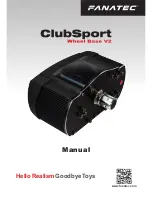
LT3695 Series
15
3695fa
Choosing an inductor value so that the ripple current is
small will allow a maximum output current near the switch
current limit.
Table 2. Inductor Vendors
VENDOR
URL
PART SERIES
TYPE
Murata
www.murata.com
LQH55D
Open
TDk
www.componenttdk.com
SLF7045
SLF10145
Shielded
Shielded
Toko
www.toko.com
D62CB
D63CB
D73C
D75F
Shielded
Shielded
Shielded
Open
Coilcraft
www.coilcraft.com
MSS7341
MSS1038
Shielded
Shielded
Sumida
www.sumida.com
CR54
CDRH74
CDRH6D38
CR75
Open
Shielded
Shielded
Open
One approach to choosing the inductor is to start with the
simple rule given above, look at the available inductors,
and choose one to meet cost or space goals. Then use
these equations to check that the LT3695 regulators will
be able to deliver the required output current. Note again
that these equations assume that the inductor current is
continuous. Discontinuous operation occurs when I
OUT
is less than
Δ
I
L
/2.
Input Capacitor
Bypass the input of the LT3695 regulators’ circuit with a
ceramic capacitor of X7R or X5R type. Y5V types have poor
performance over temperature and applied voltage, and
should not be used. A 2.2μF to 10μF ceramic capacitor is
adequate to bypass the LT3695 regulators and will easily
handle the ripple current. Note that larger input capacitance
is required when a lower switching frequency is used. If
the input power source has high impedance, or there is
signifi cant inductance due to long wires or cables, additional
bulk capacitance may be necessary. This can be provided
with a lower performance electrolytic capacitor.
Step-down regulators draw current from the input sup-
ply in pulses with very fast rise and fall times. The input
capacitor is required to reduce the resulting voltage ripple
at the LT3695 regulators and to force this very high fre-
quency switching current into a tight local loop, minimizing
EMI. A 2.2μF capacitor is capable of this task, but only if
it is placed close to the LT3695 regulators (see the PCB
Layout section for more information). A second precau-
tion regarding the ceramic input capacitor concerns the
maximum input voltage rating of the LT3695 regulators.
A ceramic input capacitor combined with trace or cable
inductance forms a high-Q (underdamped) tank circuit.
If the LT3695 regulators circuit is plugged into a live sup-
ply, the input voltage can ring to twice its nominal value,
possibly exceeding the LT3695 regulators’ voltage rating.
For details see Application Note 88.
Output Capacitor and Output Ripple
The output capacitor has two essential functions. Along
with the inductor, it fi lters the square wave generated by
the LT3695 regulators to produce the DC output. In this
role it determines the output ripple, and low impedance
at the switching frequency is important. The second func-
tion is to store energy in order to satisfy transient loads
and stabilize the LT3695 regulators’ control loop. Ceramic
capacitors have very low equivalent series resistance
(ESR) and provide the best ripple performance. A good
starting value is:
C
V
f
OUT
OUT
SW
=
50
where f
SW
is in MHz, and C
OUT
is the recommended
output capacitance in μF. Use X5R or X7R types. This
choice will provide low output ripple and good transient
response. Transient performance can be improved with a
higher value capacitor if the compensation network is also
adjusted to maintain the loop bandwidth. A lower value
of output capacitor can be used to save space and cost
but transient performance will suffer. See the Frequency
Compensation section to choose an appropriate compen-
sation network.
When choosing a capacitor, look carefully through the
data sheet to fi nd out what the actual capacitance is under
operating conditions (applied voltage and temperature).
A physically larger capacitor, or one with a higher voltage
rating, may be required. High performance tantalum or
electrolytic capacitors can be used for the output capacitor.
APPLICATIONS INFORMATION
















































